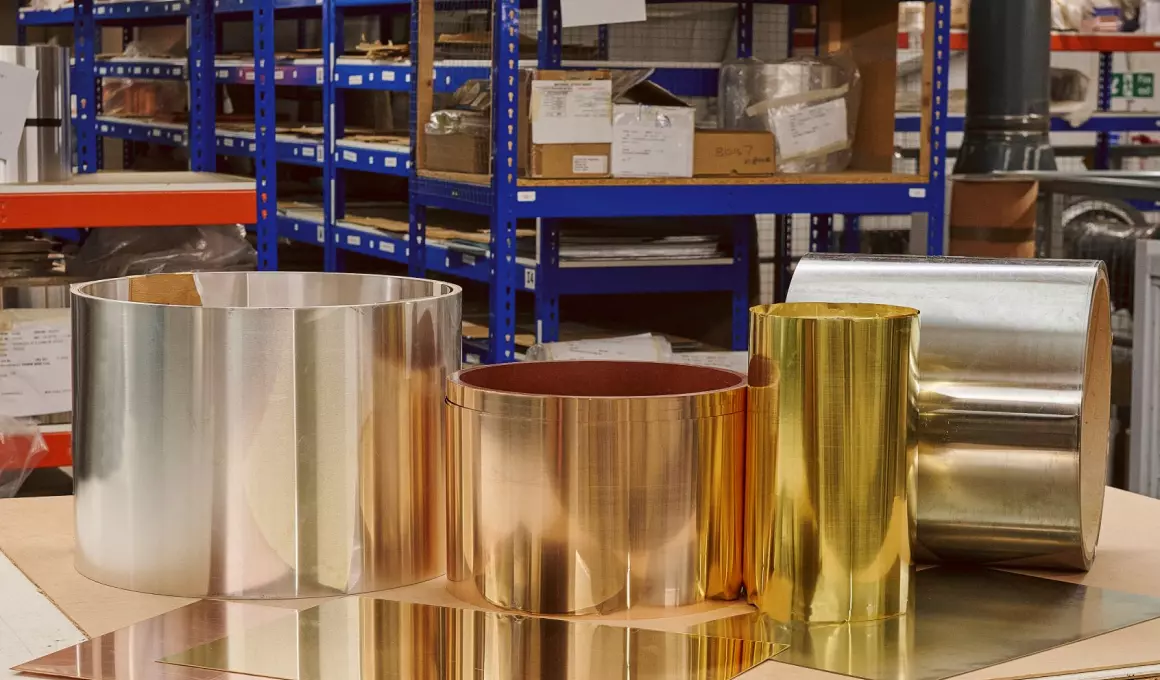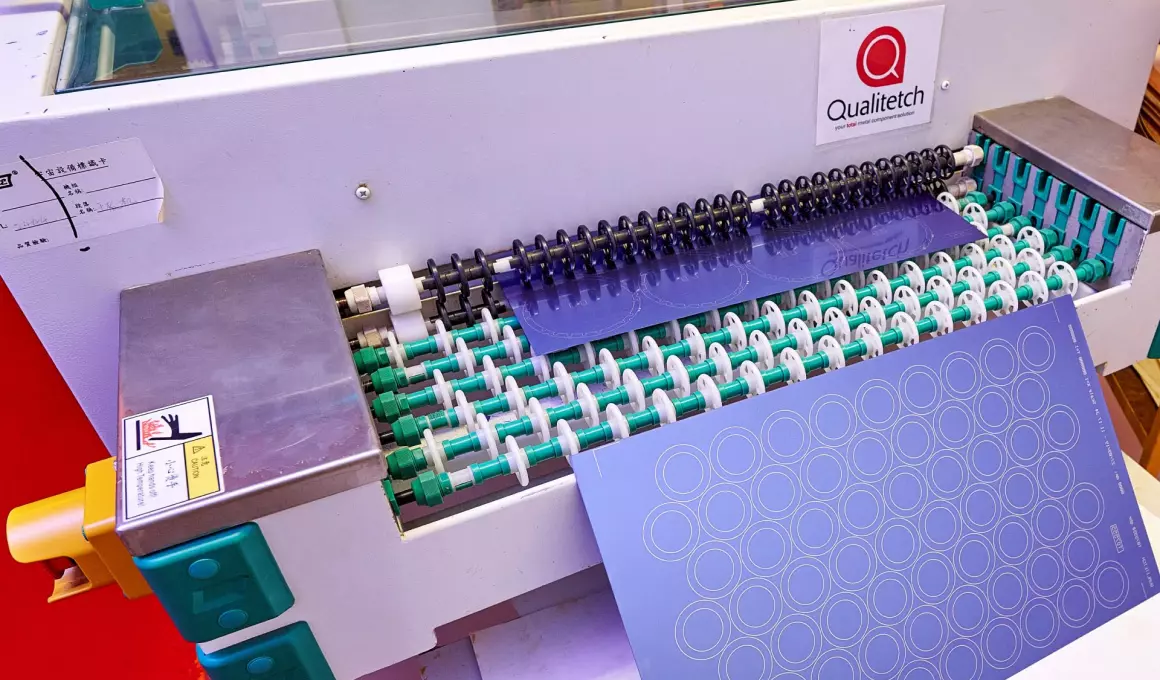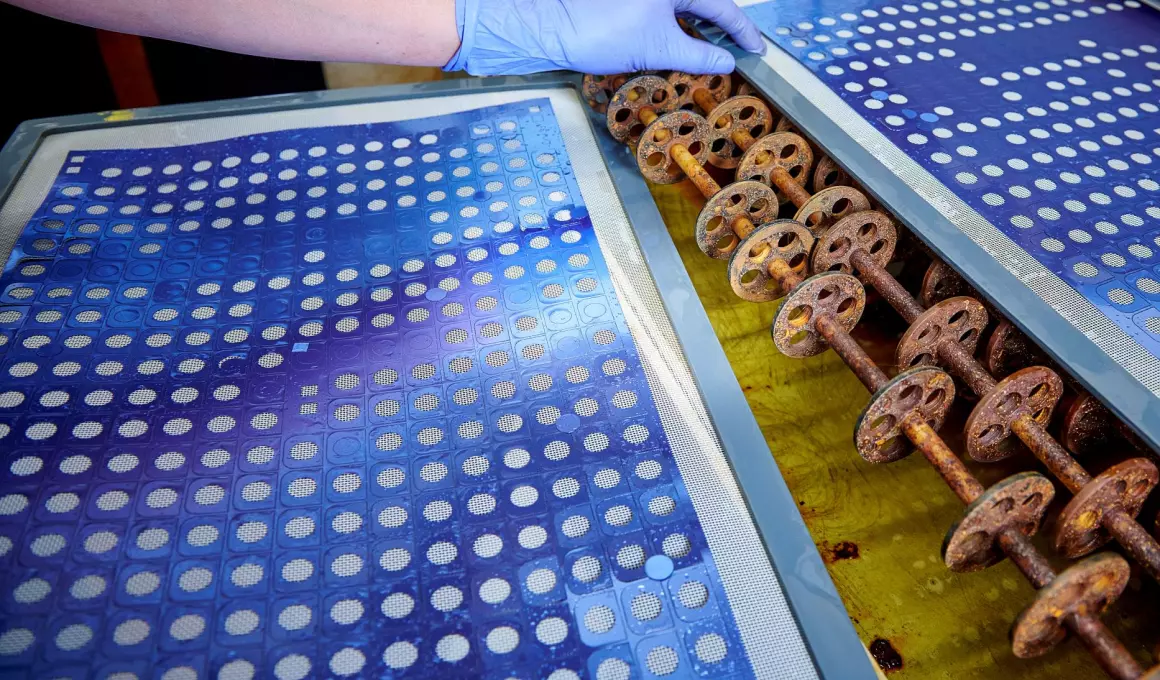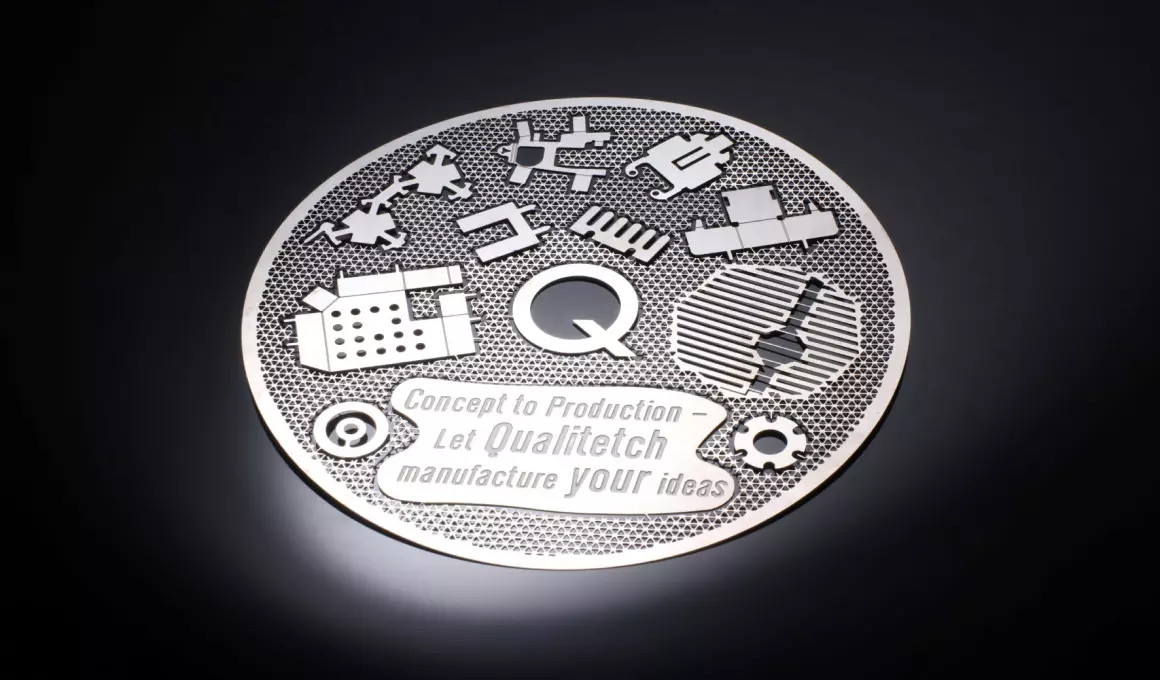© 2024 Qualitetch Ltd. Site by i3MEDIA
Your total metal component manufacturing solution
This makes Nickel Silver a popular choice when developing a variety of components particularly RFI, EMC & EMI screening cans and shields for PCB's . At Qualitetch, we are able to offer both Nickel or Nickel Silver for any applications you require.
Photo etching is a precise and intricate manufacturing process used to produce high-quality metal components with fine detail and accuracy. When applied to nickel silver, it showcases exceptional versatility and durability, making it a preferred material for various industries.
Nickel silver, despite its name, doesn't contain silver. Instead, it's an alloy composed primarily of copper, nickel, and zinc. This amalgamation results in a metal that boasts excellent corrosion resistance, high ductility, and superb electrical conductivity, making it an ideal choice for photo chemical etching.
The chemical etching process begins with a sheet of nickel silver, which undergoes a meticulous sequence of steps. Initially, the metal is thoroughly cleaned and prepared to ensure the surface is free from impurities. A light-sensitive photoresist material is then applied to both sides of the sheet, creating a protective layer.
Next comes the phototooling stage, where a precise photographic image of the desired component is transferred onto the photoresist using UV light. This exposure creates a chemical reaction, hardening the areas that correspond to the intended design while leaving the rest of the photoresist unchanged.
Subsequently, the sheet is submerged in an etchant solution, typically a ferric chloride acid, which selectively removes the unprotected areas of the metal. The etchant dissolves the unhardened photoresist and chemically erodes the exposed metal, leaving behind the intricately designed components.
The etching process allows for unparalleled precision and intricacy, enabling the creation of intricate patterns, fine meshes, complex geometries, and precise features on the nickel silver sheet. It can produce components with tolerances as tight as a few micrometers, ensuring consistent and accurate parts.
The advantages of photo etching for nickel silver components are manifold. Firstly, it allows for cost-effective production of intricate designs without the need for expensive tooling or extensive machining. It offers flexibility in design iterations and customization, accommodating rapid prototyping and efficient production of small to large batches.
Moreover, the process retains the material properties of nickel silver, such as its electrical conductivity and corrosion resistance, ensuring that the final components meet stringent performance requirements across various applications. This makes it highly sought after in industries like electronics, aerospace, automotive, and medical devices.
Components produced through photochemical etching in nickel silver find application in diverse fields. They might include intricate electrical contacts and connectors in electronic devices, precision filters and screens for industrial applications, ornamental and decorative elements, as well as specialized components in aerospace and medical devices where reliability and precision are paramount.
In conclusion, chemical etching of nickel silver is a sophisticated manufacturing technique that leverages the properties of this alloy to create intricate, precise, and durable components. Its versatility, coupled with the ability to produce intricate designs with exceptional precision, makes it a highly favoured method in various industries demanding high-quality metal components
Even the most intricate of designs are possible with our cost-efficient and eminently accurate Photo Chemical Etching process. The metal when finished profile cutting via etching will be burr and stress-free, and retaining all of its essential properties.
Following the finalisation of your design, we first clean the raw material nickel silver sheet and then the coat the sheet with a UV sensitive photo-resist, before then printing your required profile directly onto the UV photo resist covered sheet. After this, the material is then passed through a sprayed chemical bath solution of ferric chloride, which is used as our etchant to cut your profile design. Our chemical etching process works equally well for both soft annealed, half hard or fully hard metals, which effectively, we then acid etch a thin track line to an exacting standard to ensure your components are manufactured to your drawing design.
Any trace of photo-resist are then removed once the process has been finished. The parts are then approved by our team of QA and compliance technicians.
Due to the strength and resistance of Nickel Silver, the metal is used in a variety of industries, most commonly for shielding can applications.
We have a dedicated team of fully qualified professionals who are on hand to deal with and complete assembly work requests from our customers.
As well as offering additional services such as assembly work, soldering & spot-welding we also offer bespoke packaging if required by our customers, this can include either jigging or bespoke thermo-formed trays and lids.
The photo etching process produces metal components that are both stress-free and burr-free compared to more traditional manufacturing methods – ensuring that your end product is as both accurate and precise to your drawings.
 1
1
Qualitetch offer a huge range of metals for etching including: Stainless Steels, Carbon Spring Steels, Copper, Brass, Nickel Silver, Mild steel, Phosphor Bronze, Silver, Beryllium Copper, Aluminium, Nickel, Mu Metal, Alloy 42, Alloy 52 & Many Others.
 2
2
In order to ensure perfect parts every time, we need to clean the sheet metal to remove any impurities from the sheets surface before manufacturing your designs. This involves passing the metal sheets slowly through acid or alkaline solutions and rinsed prior to laminating, printing and developing.
 3
3
Metal cleaning involves passing the sheets slowly through conveyorised acid or alkaline solutions and rinsed clean prior to the lamination, printing and developing stages, depending on the sheet metal choice required.
 4
4
Once cleaned the metal sheets are coated with a UV sensitive photo resist, which melts to sheet in preparation for the printing process.
 5
5
The printing process involves us taking your chosen profile design and applying it to a two sided top and bottom acetate photo film mask, that we then print your design onto the UV sensitive photo resist.
 6
6
Once the metal sheet is printed with your chosen design, we then need to develop the sheet. This process effectively washes away the fine lines of the profile we are cutting, leaving raw metal track lines ready for the etching process to work it's magic very precisely.
 7
7
The etching process itself is an acid, usually ferric chloride, that effectively eats it's way through the metal at a known rate to ensure precision and targeted only in the areas you wish to remove, such as the profile track lines or other holes and features such a mesh. The rest of the sheet is masked by the UV photo sensitive blue resist, to protect the metal from the etchant until the parts are complete. This can be a very useful in a manufacturing process as the design can be very complex or include tabs or half etch fold bend lines at no added cost as you simply print your design rather than needing expensive machining time. Following an on-line dimensional check, all that is then required, is for us to strip and remove the UV photo sensitive resist coating and the parts are ready for full QA Inspection.
 8
8
At Qualitetch we offer various levels of QA inspection depending on our customers needs, as we supply both major blue chip businesses all over the world as well as smaller local businesses and anywhere in-between, as the photo etching process is very versatile. We have various automated optical equipment to ensure you parts are accurately supplied to your drawings. We also offer levels of inspection including 100% inspection, PPAP levels, batch inspection, First article inspection (FAIR) and bespoke customer inspection as required.
 9
9
Once the parts are fully inspected and passed they are ready to be packed and sent to the customer, or for additional processes such as plating, forming, soldering, spot-welding, machining, EDM wire erosion, heat treatment or any other bespoke services required, such as assembly.
As the process of chemically etching Nickel Silver needs to be completed correctly to manufacture quality finished components without staining or etch faults, you need to ensure you use a trusted manufacturer to provide the best possible quality within the marketplace That’s where we come in. At Qualitetch, we pride ourselves in our world class manufacturing solutions and customer service to deliver your metal component requirements flat or formed.
For more information about how our nickel etching services can make a difference to your products, please give us a call today on 01354 658787.
Please fill out our enquiry request form for more information about how our photo etching services can make the difference to your project.
Contact UsBipolar Plate manufacture & hydrogen fuel cells & Electrolysers through chemical etching
View the ServiceWe offer a wide range of engineering solutions and process methods to suit your project needs.
View the ServiceStainless steel photo chemical etching is one of the most common materials we etch.
View the ServiceSilver is one of the most common precious metals around the world
View the ServiceSteel is one of the most popular metal materials to use in manufacturing.
View the Service
